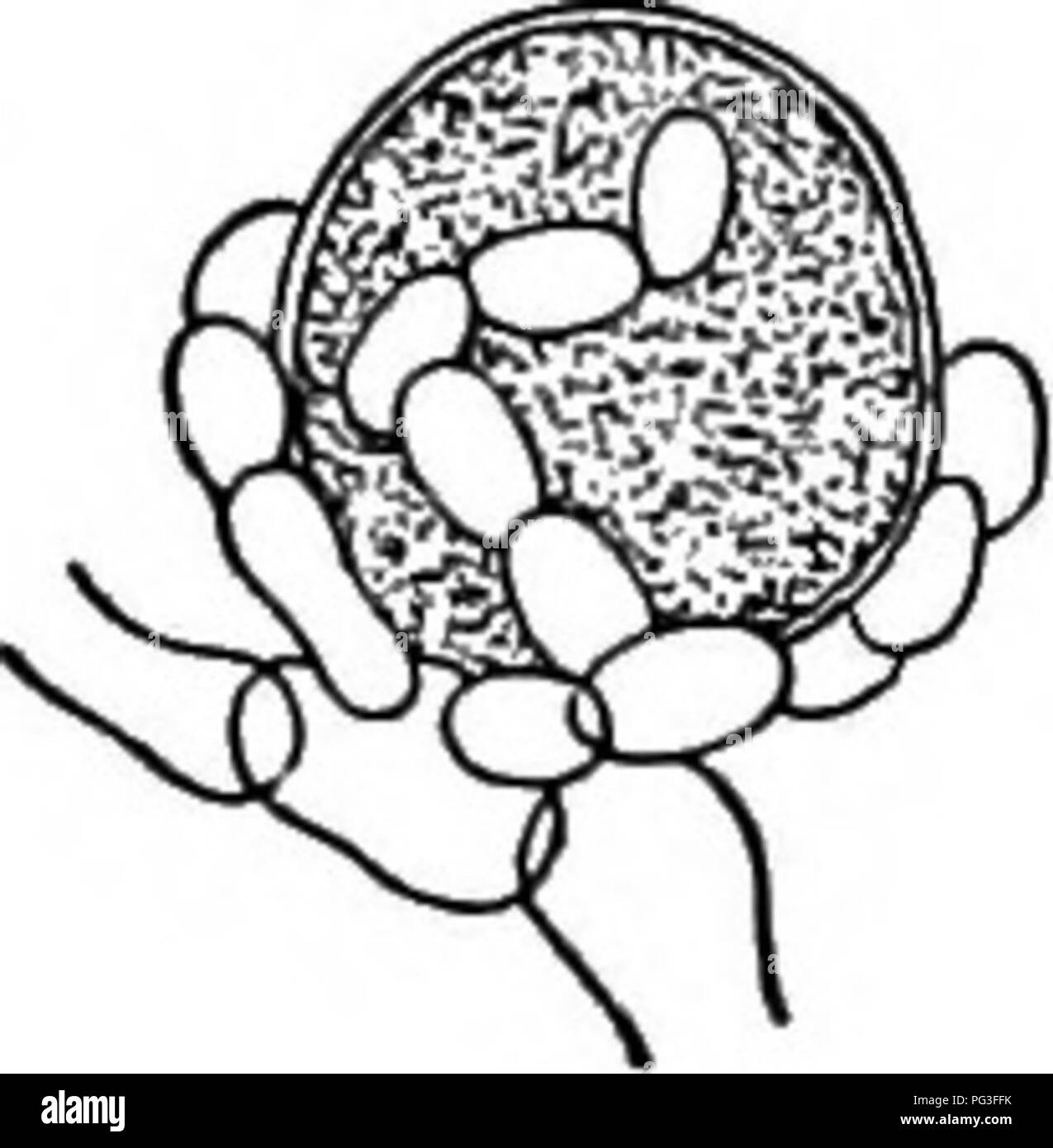. A textbook of botany for colleges and universities ... Botany. 8o2 ECOLOGY Another indication of autonomy is seen in the geographic distribution of lichens. As a class, they are among the most xerophytic and autophytic of plants, many species growing on the driest and barest of rocks, where few other plants can maintain themselves. Yet lichens are made up of algae, which as a group are characteristically hydrophytic, and of fungi, which as a group are characteristically mesophytic and dependent; the symbiotic union of two such diverse elements appears to result in a form widely different fro

Image details
Contributor:
Central Historic Books / Alamy Stock PhotoImage ID:
PG3FFKFile size:
7.2 MB (194.6 KB Compressed download)Releases:
Model - no | Property - noDo I need a release?Dimensions:
1566 x 1596 px | 26.5 x 27 cm | 10.4 x 10.6 inches | 150dpiMore information:
This image is a public domain image, which means either that copyright has expired in the image or the copyright holder has waived their copyright. Alamy charges you a fee for access to the high resolution copy of the image.
This image could have imperfections as it’s either historical or reportage.
. A textbook of botany for colleges and universities ... Botany. 8o2 ECOLOGY Another indication of autonomy is seen in the geographic distribution of lichens. As a class, they are among the most xerophytic and autophytic of plants, many species growing on the driest and barest of rocks, where few other plants can maintain themselves. Yet lichens are made up of algae, which as a group are characteristically hydrophytic, and of fungi, which as a group are characteristically mesophytic and dependent; the symbiotic union of two such diverse elements appears to result in a form widely different from either, and more resistant and independent than is to be found in almost any other group of plants. The nature of lichen symbiosis. — The parasitism of the fungal sym- biont upon the algal layer is undoubted, but there are various theories concerning the relation of the alga to the fungus. A common theory is that the relationship is one of helolism or slavery, the algal symbiont being represented as indifferent to the fungus. Another common theory is that of reciprocal parasitism, F1G.1117.—Analgal allied to which is the recently proposed theory of cell of a lichen (Cla- endosaprophytism, and also the older view that the doni^ furcata), which ^, , jj^j^^ ^^j^j^^ ^j^^ ^^ ^, ^^^ ^^^^^^ IS closely embraced by '=' -' " o j hyphal filaments of the protected than when separate and thus are enabled lichen fungus; highly to live in drier habitats. Still another view is that magni e . — rom ^^^ ^j^^ j^ merely the host of an ordinary parasite. The parasitism of the fungus is demonstrated clearly by a number of facts, such as the close embracement of algal cells by fungal hyphae (fig. my), by the frequent entrance of hyphae into algal cells, by the occasional development of haustoria, by the disorganization and subsequent emptying of the contents of many algal cells, and, perhaps, by the apparent restriction upon algal activity, which is evidenced by increased vigor when rele